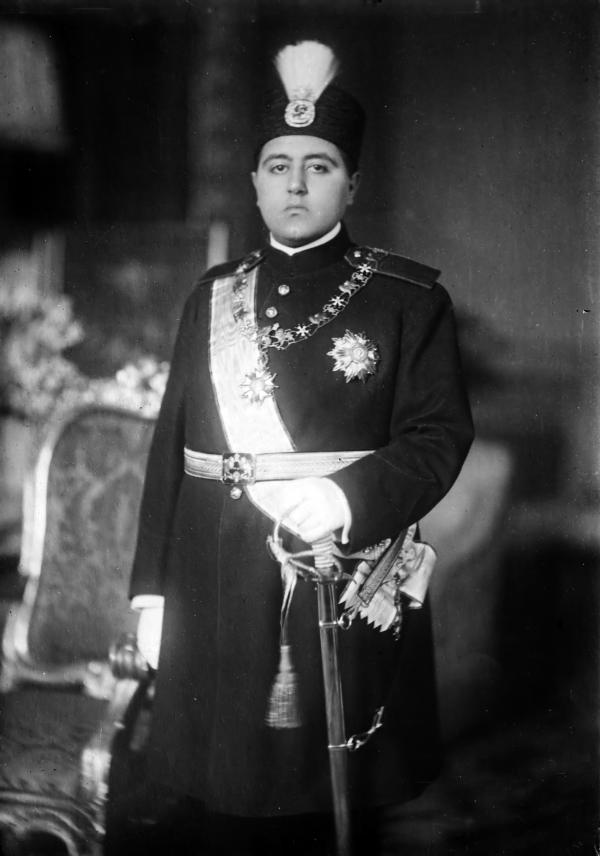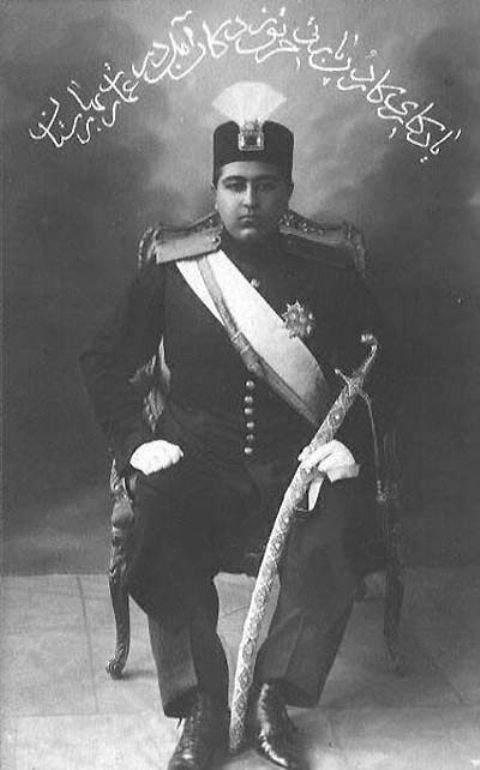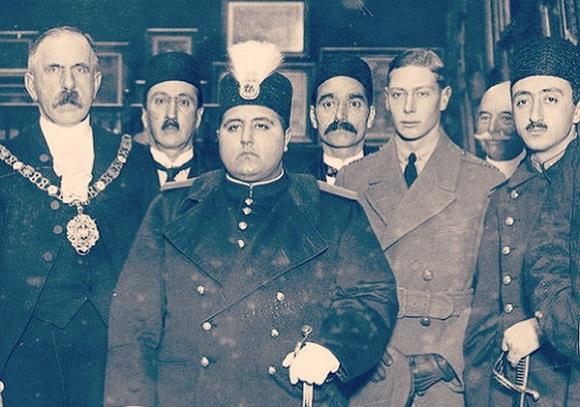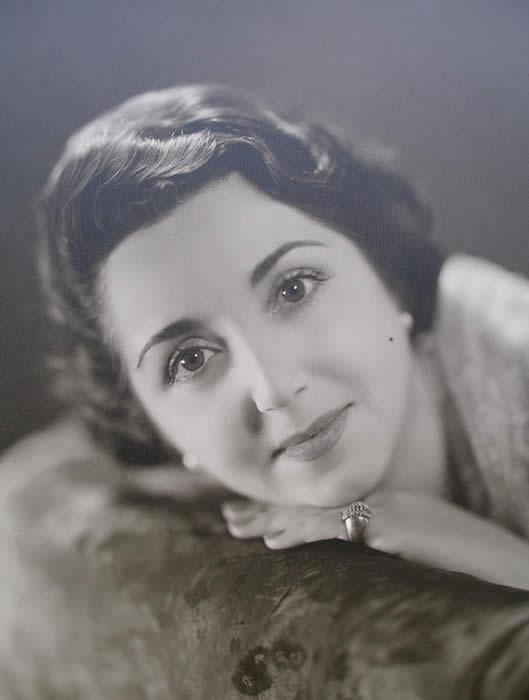Biography of Ahmad Shah Qajar; The last king of the Qajar dynasty

 Ahmad Shah
Ahmad ShahA summary of Ahmad Shah's biography:
Full name: Ahmad Shah Qajar
Date of birth: 12 February 1275
Place of birth: Tabriz, West Azerbaijan, Iran
Reign: July 25, 1288 to November 9, 1304
Previous: Mohammad Ali Shah
Successor: Reza Shah, the founder of the Pahlavi government
Died: March 9, 1308 in Neuilly Sorsen, Audusen, France
Tomb: Hossein Bin Ali Tomb (Karbala)
 Biography of Ahmad Shah
Biography of Ahmad ShahBiography of Ahmed Shah:
Ahmad Shah Qajar was born on 12 Bahman 1275 in Tabriz. He is the seventh and last king of Iran who was chosen from the Qajar dynasty and succeeded Mohammad Ali Shah. He was the king of Iran from July 25, 1288 to November 9, 1304 and was finally removed from the position of king by the National Council.
Ahmad Shah was the seventh child of Muhammad Ali Shah and his first son from Queen Jahan. He was born in Tabriz during the time of his father's crown prince, and after the conquest of Tehran and the deposing of Mohammad Ali Shah, he took over the kingdom at the age of 13 on behalf of the supreme assembly of men and elders of the state. Until he reached the age of majority and was crowned in July 1293, he was first known as Azd al-Mulk and then as Abu al-Qasim Nasir al-Mulk, the viceroy.
Ahmad Shah's childhood:
Ahmad Shah's childhood was spent in Tabriz, and before reaching the throne, he was known as Ahmad Mirza. He reached the Sultanate at the age of 12 and was removed from the throne in 1304 through the vote of the National Assembly. Since Ahmad Shah had no children when he ascended to the throne, his younger brother Mohammad Hassan Mirza was elected as the crown prince.
During the reign of Ahmad Shah, his brother Mohammad Hassan Mirza ruled Azerbaijan for a while and resided in Tabriz. After the uprising, Sheikh Mohammad Khayabani returned to Tehran. Ahmad Shah left Iran for France in 1302, two years before the official end of his reign, Mohammad Hassan Mirza stayed in Iran until 1304 and was exiled to Europe after the official transfer of power to Reza Khan.
 The photos left by Ahmad Shah
The photos left by Ahmad ShahAhmad Shah's Kingdom:
In July 1293, the coronation of Ahmad Shah took place at the same time as the start of the First World War, and he was officially and legally responsible for leading the kingdom. After this incident, Ahmad Shah announced Iran's neutrality regarding the First World War.
After the end of the First World War in 1297 AD, Ahmad Shah first removed Samsam al-Sultaneh Bakhtiari from the prime ministership, and on August 16, 1297, he chose Wathouq al-Dawlah as the head of the ministerial office.
Wasthouq al-Sultaneh was able to establish relative security in the country, Naib Hossein Kashi's mob in Kashan as well as the movement of the Punishment Committee in Tehran were suppressed by Wasthouq al-Dawlah. The 1919 agreement with the British government was created during the prime ministership of Watouq al-Dawlah, which established a relative security in the country, but it caused widespread criticism and many considered it to be against the independence of Iran, but this agreement, according to Watouq al-Dawlah, was necessary to maintain independence and Territorial integrity of Iran has been, finally popular opposition led to not concluding the contract.
Wasthuq al-Daulah sent Ahmad Shah on a European trip, which was warmly welcomed by England. Mohammad Taqi Bahar writes about this issue: “When the Shah of Iran was supposed to speak at the King of England's banquet about the 1919 agreement that England had concluded… after the copy of the King of England's speech was brought to the Shah and it was decided When an answer was prepared, the Shah refused to accept it and said: Those who have received money should confirm, I will never confirm!… That same night Nasir al-Mulk told the Shah: You have wasted your work! The king also replied that: “If I sell cabbage in Switzerland, it is better than being a king in such a country!”
After Ahmad Shah returned to Tehran in July 1299, he accepted the resignation of Tawaq al-Dawlah, after that Mirza Hassan Khan chose Moshir al-Dawlah as the head of the government.
The Shah tried to have relations with Russia in the governments of Mushir al-Dawlah and Sepahdar Rashti, and finally, by sending the adviser of Mamalek Ansari to Moscow, he created the grounds for concluding an agreement between Iran and the Soviet Union in 1921.
On March 3, 1299, Ahmad Shah faced the coup d'état of Seyyed Zia and Reza Khan Mirpanj and finally had to accept Seyyed Zia's vice-ministership. In Khordad 1300, Ahmad Shah was able to remove Seyyed Diya from the post of minister and elected Qawam al-Sultaneh to the post of deputy minister. Subsequently, the cabinets of Qawam, Mushir al-Dawlah, the second cabinet of Qawam, Mustofi al-Mamalek and the last cabinet of Mushir al-Dawlah were appointed by Ahmad Shah.
Following this issue, the Shah made another trip to Europe and after returning at the same time as the fall of Mushir al-Doleh's cabinet in November 1302, against his heart's desire, he elected Reza Khan Sardarsepe, who was the Minister of War during all this time, as the Prime Minister. Zafiri left Iran again in 1302 for France. This journey was actually the beginning of Ahmad Shah's exile.
In April 1303, Ahmad Shah removed Reza Khan from the post of prime minister, but due to the parliament's refusal to accept the Shah's involvement in the removal and installation of the prime minister and the strong support of his supporters, he was forced to make Reza Khan the prime minister again.
Khazali's rebellion in Khuzestan took place in Shahrivar and Mehr 1303, Reza Khan accused Ahmad Shah of supporting the partition of the country by Khazali, and he himself entered Khuzestan and suppressed the rebellion.
On November 9, 1304, finally, with the vote of the National Council, Ahmad Shah was removed from the kingdom of Iran and the Qajar dynasty was destroyed.
The single article of the removal of the Qajaria was as follows: The National Assembly, in the name of Saadat Mellat, announces the extinction of the Qajaria monarchy and hands over the temporary government to Mr. Reza Khan Pahlavi within the limits of the constitution and relevant laws of the country. Determining the definitive task of the government is deferred to the opinion of the Constituent Assembly, which is formed to change articles 36-37-38-40 of the constitutional amendment.
The Constituent Assembly was re-established and introduced Reza Khan as the king with the name of Reza Shah Pahlavi among the people. This action of the Majlis was declared against the constitution and illegitimate by Ahmad Shah, but in practice he could not take any action to face his removal.
 Reaching the throne of Ahmad Shah
Reaching the throne of Ahmad ShahAhmad Shah's political record:
According to what Mahmood Khan Ehtsham al-Satneh says: Ahmad Shah's role in concluding the disgraceful contract (1919) is not only not less than its famous leaders, but also more. In 1297, Ahmad Shah dismissed Samsam al-Sultaneh Bakhtiari as the head of the government and assigned Watuq al-Dawlah to form the cabinet in order to prepare the ground for the conclusion of the contract.
At the same time as the contract, Ahmad Shah received 200,000 lira from the British Minister of Mukhtar, like the rest of the people, including Wasuq al-Dawlah and the ministers of foreign affairs and finance. In addition to this amount, he also received a letter of trust, which agreed that the Shah along with others would be entertained in European countries for 6 months at the expense of England. England promised to pay him a monthly salary as long as the contract remains.
Among other things that can be seen in the political Marnak of Ahmad Shah, we can mention Mossadegh's opinion, which declares in the 14th Assembly of the National Council:
When the Shah in London refused to recognize the name of the contract in the official invitation of the British government, this was while Nasir al-Molk announced that he would be removed from the throne in case of resistance. Shah Vatanparast increased his resistance and did not accept the nominal contract. What was higher for the king than to have his name mentioned in good deeds until today?
The events that ultimately lead to a great name are few and may not happen very often in someone's lifetime. Happy is the person who does not face these events and unfortunate is the person who submits himself to the situation and copes with every adversity.
In the Qajar dynasty, seven people reigned, two of whom were called kings. The first one is Muzaffaruddin Shah, in whose reign the nation was granted freedom, and then there is Ahmad Shah, who refused to be captured and left the kingdom. I wish this young king would not give in to the coup and leave the throne sooner.
Marriage of Ahmad Shah Qajar:
Ahmad Shah and his brother were married five times, but it seems that apart from married and official women, they also had concubines and concubines in the court. In his memoirs, Tajul-Muluk Ayramlu says about entering the interior of the Golestan Palace and evacuating the Qajar survivors:
“Mohammad Hasan Mirza divorced his married wife and he did not have a married wife. But when we went inside, we noticed that there were more than 18 concubines of Mohammad Hassan Mirza, the oldest of whom was 14 years old and was from Imamah, north of Tehran. And Mohammad Hasan Mirza, who were generally concubines, would rush from one room to another and open the doors of the chests and take whatever they could.”
 Ahmed Shah's wife
Ahmed Shah's wifeDeath of Ahmad Shah:
Ahmad Shah finally died in Paris on March 9, 1308 and was buried in Karbala.
compilation: Cover biographical section






